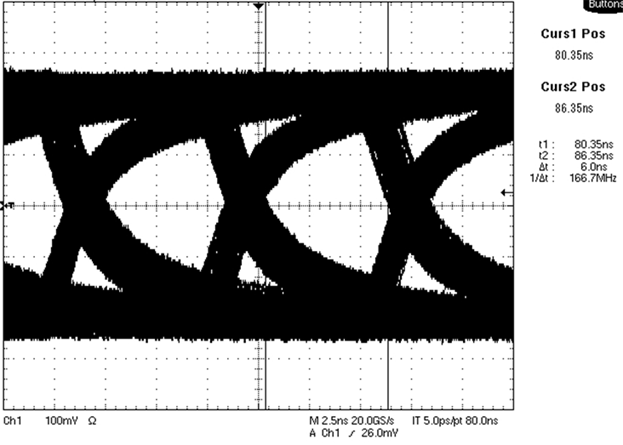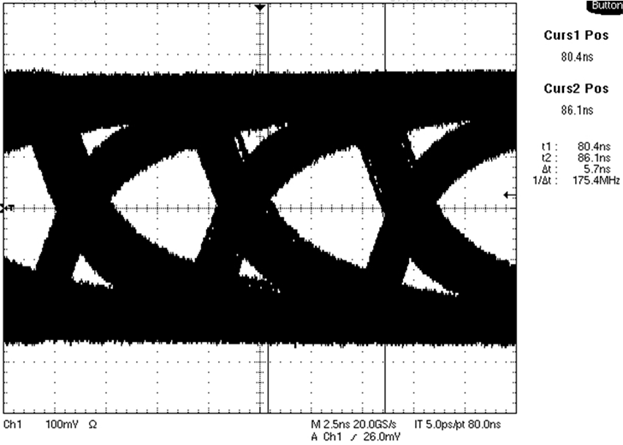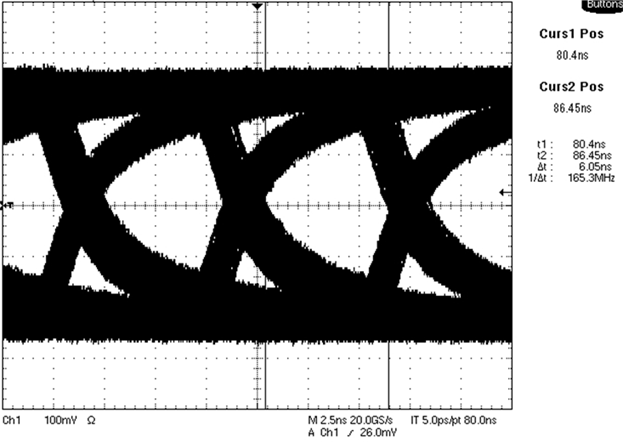SNLA299 August 2018 LMH0324 , LMH0397 , LMH1208 , LMH1218 , LMH1219 , LMH1297
-
LMH12xx MADI Compatibility Application Note
- Trademarks
- 1 MADI Specification Requirements
- 2
LMH12xx Device Family
- 2.1 LMH12xx Device Family
- 2.2 LMH1218 Device Family Hardware Changes to Support MADI Compatibility
- 2.3 LMH1219 Device Family Recommended Register Settings
- 3 Summary
- 4 References
1.2 MADI Receiver Electrical Requirements
MADI specification—unlike SDI—calls for minimum eye opening of 6 ns or 0.75 UI. Also, minimum vertical eye opening is 150 mV. Figure 1 through Figure 3 show a 6-ns horizontal eye opening. a variety of 75-Ω cables.
NOTE
For these eye diagrams, a MADI cable driver with 1-nS rise/fall time and 600-mV output swing was used. Thus, the cable lengths noted below are the maximum reach for each cable model or cable type with a 6-ns minimum vertical eye opening. For other cable types, it is proportional to the insertion loss at Nyquist frequency.
 Figure 1. 100-m B1694A 6-ns Minimum Eye Opening
Figure 1. 100-m B1694A 6-ns Minimum Eye Opening  Figure 3. 120-m 5.5CFB 6-ns Minimum Eye Opening
Figure 3. 120-m 5.5CFB 6-ns Minimum Eye Opening  Figure 2. 150-m 5.5CUHD 6-ns Minimum Eye Opening
Figure 2. 150-m 5.5CUHD 6-ns Minimum Eye Opening